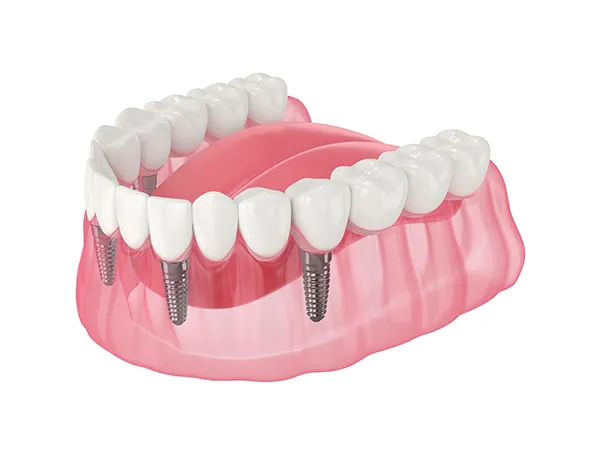History of Dental Implants Charleston As you consider the various solutions available for replacing missing teeth, understanding the history of dental implants can help you appreciate the technological advancements involved in modern dentistry. As you consider the various solutions available for replacing missing teeth, understanding the history of dental implants can help you appreciate the technological advancements involved in modern dentistry. Dental implants, a remarkable synthesis of biology and engineering, have become the chosen solution for tooth replacement in many cases, offering a permanent solution that closely replicates the form and function of a natural tooth. History shows us that people have been attempting to replace missing teeth for a very long time. The early attempts at dental implants were fraught with failure due to infection and rejection. 600 AD - Ancient Civilizations' Attempts at Tooth ReplacementDental implants commenced their journey of evolution in ancient civilizations. Scholars have unearthed evidence suggesting that ancient Mayans, dating back to 600 A.D., inserted pieces of shell into the jaws to replace missing teeth. Archaeologists have discovered Egyptian mummies with gold wire implants, indicating that even in antiquity, human beings sought ways to restore their dental function and aesthetics. 18th Century - Early Attempts to Replace Missing TeethIn the 18th century, attempts to implant human teeth or animal teeth into the sockets of missing teeth were common, though largely unsuccessful due to the high rate of infection and the body's rejection. The concept of osseointegration - the direct structural and functional connection between living bone and the surface of a load-bearing artificial implant, emerged in the mid-20th century, heralding a new era in the field of dental implantology. 1952 - Osseointegration is DiscoveredIt was in 1952 that Swedish orthopedic surgeon, Per-Ingvar Brånemark made a groundbreaking discovery. He observed that titanium could bond irreversibly with bone tissue, a phenomenon he called osseointegration. 1965 - The First Successful Titanium ImplantApplying this discovery, Brånemark developed the first successful titanium dental implant, which was implanted into a human volunteer in 1965. 1970s and 1980s - Dental Implantology GrowsThroughout the 1970s and 1980s, Branemark's dental implant technology was gradually introduced to different parts of the world. It was during this period that dental implants began to gain universal acceptance, with dentists recognizing their superior ability to replace missing teeth effectively and permanently with a success rate of over 90 percent. By the late 1980s, dental implants became more accessible and were increasingly being used in everyday dental practice.  Modern Dental ImplantsOne of the primary advancements that has revolutionized dental care is the development of modern dental implants. Commencing in the latter half of the 20th century, dental implants have provided a reliable and long-lasting solution to missing teeth, ushering opportunities for improved oral health and quality of life for millions of people worldwide. Advancements and modifications have continued over the years, with recent decades witnessing a surge in the popularity of dental implants. Today's implant procedures have evolved from a cumbersome multi-step process to a more streamlined, patient-friendly experience, thanks to enhancements in surgical procedures, implant design, and materials. Computer-guided implant surgery is now a common practice, yielding highly precise results in less time and with less discomfort for patients. Dental implants have indeed come a long way from their initial inception, providing a valuable service to those with tooth loss. They remain the most effective and reliable solution for replacing missing teeth, offering both practical benefits and aesthetic advantages, enhancing smiles and self-confidence. The early developments paved the way for modern dental implants, which consist primarily of a titanium post that is implanted into the jawbone, mimicking the root of the tooth. Modern dental implants, composed primarily of titanium, offer a durable and aesthetically pleasant solution for tooth replacement. This is topped with an abutment and a crown, tailored to match the color and shape of the natural teeth. What is the Benefit in Learning About the History of Dental Implants?People may want to know about the history of dental implants for several reasons:
Overall, exploring the history of dental implants offers valuable insights into the development of dental care practices, enhances appreciation for technological advancements, and provides context for current dental implant procedures and techniques. What is the benefit of dental implants over other tooth restorations?As a leading method of tooth replacement, dental implants allow dentists to replace a missing tooth from its root, mimicking the same structure as your natural tooth. In comparison to other restorative procedures such as bridges or dentures, dental implants promise a higher level of functionality, comfort, and aesthetics. One of the key strengths of dental implants lies in their ability to preserve bone and prevent further bone loss. Unlike bridges that simply hover over the gap of the missing tooth or dentures that rest on top of the gums, dental implants fuse with the bone in a process known technically as osseointegration. Through osseointegration, dental implants encourage bone growth and maintenance, making your jawbone healthier over time. This response differentiates dental implants from other forms of tooth restoration, as it prevents the bone loss typically associated with tooth loss. From an aesthetic perspective, dental implants closely replicate the appearance of a natural tooth, thus enhancing your confidence and smile. Because they emerge directly from your gum, much like your natural teeth, they offer a visually appealing solution. Dentures, on the other hand, have visible clasps that can detract from the naturalness of your smile; bridges may involve the filing down of adjacent healthy teeth, impacting the overall appearance. The longevity of dental implants is another notable benefit, as they can last for several decades with proper care. Dental implants have a high success rate and are considered a long-term solution. cosmetic dentistry charlestonWhile the benefits are abundant, dental implants aren't for everyone. Certain health conditions may limit your eligibility, and the investment is higher in comparison to bridges and dentures. But the superior functionality, comfort, and aesthetics they offer could be worth the added initial investment, considering the long-term benefits. We encourage you to discuss these factors with our implant dentists and schedule a consultation appointment at 304-343-5161. |